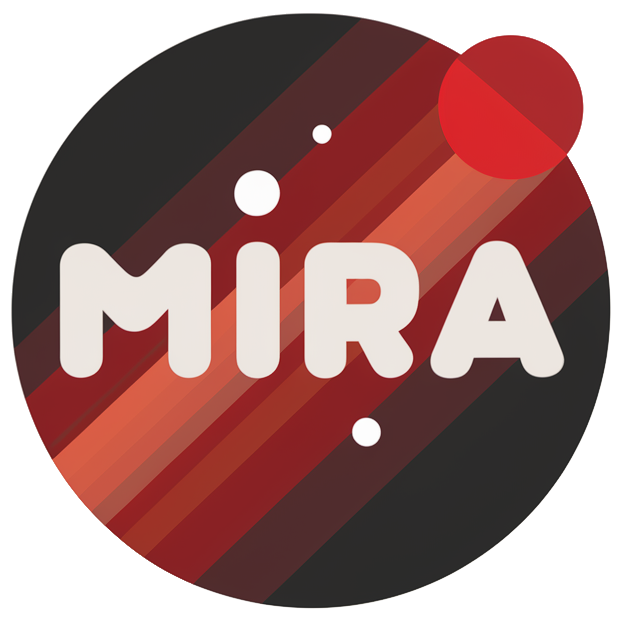Zhaoyang Zhang1*, Ziyang Yuan1*, Xuan Ju1, Yiming Gao1, Xintao Wang1#, Chun Yuan, Ying Shan1,
1ARC Lab, Tencent PCG *Equal contribution #Project lead
We introduce Mira (Mini-Sora), an initial foray into the realm of high-quality, long-duration video generation in the style of Sora. Mira stands out from existing text-to-video (T2V) generation frameworks in several key ways:
-
Extended sequence length: While most frameworks are limited to generating short videos (2 seconds / 16 frames), Mira is designed to produce significantly longer sequences, potentially lasting 10 seconds, 20 seconds, or more.
-
Enhanced dynamics: Mira has the capability to create videos with rich dynamics and intricate motions, setting it apart from the more static outputs of current video generation technologies.
-
Strong 3D consistency: Despite the intricate dynamics and object interactions, Mira ensures the 3D integrity of objects is preserved throughout the video, avoiding noticeable distortions.
Please acknowledge that our work on Mira is in the experimental phase. There are several areas where Sora still significantly outperforms Mira and other open-source T2V frameworks, including:
-
Interactive objects and environments: Sora supports the generation of videos where objects and surroundings engage in dynamic interactions, adding a layer of complexity and realism.
-
Sustained object consistency: Sora maintains consistent object shapes, even when they temporarily exit and re-enter the frame, ensuring continuity and coherence.
The Mira project is our endeavor to investigate and refine the entire data-model-training pipeline for Sora-like, lightweight T2V frameworks, and to preliminarily demonstrate the aforementioned Sora characteristics. Our goal is to foster innovation and democratize the field of content creation, paving the way for more accessible and advanced video generation tools.
10s 384×240
mira-384-v0.mp4
Each individual video can be downloaded from here.
20s 128×80
mria-128-v0.mp4
Stay tuned! We are actively working on this project. Expect a steady stream of updates as we expand our dataset, enhance our annotation processes, and refine our model checkpoints. Keep an eye out for these upcoming updates, as we continue to make strides in our project's development.
[2024.04.01] 🔥 We're delighted to announce the release of Mira and MiraData-v0. This release offers a comprehensive open-source suite for data annotation and training pipelines, specifically tailored for the creation of long-duration videos with dynamic content and consistent quality. Our provided codes and checkpoints empower users to generate videos up to 20 seconds in 128x80 resolution and 10 seconds in 384x240 resolution. Dive into the future of video generation with Mira!
## create a conda enviroment
conda update -n base -c defaults conda
conda create -y -n mira python=3.8.5
source activate mira
## install dependencies
pip install torch==2.0 torchvision torchaudio decord==0.6.0 \
einops==0.3.0 imageio==2.9.0 \
numpy omegaconf==2.1.1 opencv_python pandas \
Pillow==9.5.0 pytorch_lightning==1.9.0 PyYAML==6.0 setuptools==65.6.3 \
torchvision tqdm==4.65.0 transformers==4.25.1 moviepy av tensorboardx \
&& pip install timm scikit-learn open_clip_torch==2.22.0 kornia simplejson easydict pynvml rotary_embedding_torch==0.3.1 triton cached_property \
&& pip install xformers==0.0.18 \
&& pip install taming-transformers fairscale deepspeed diffusers| Name | Model Size | Data | Resolution |
|---|---|---|---|
| 128-v0.pt | 1.1B | Webvid(pretrain) + MiraData-v0 | 128x80, 120 frames |
| 384-v0.pt | 1.1B | Webvid(pretrain) + MiraData-v0 | 384x240, 60 frames |
Please download the above checkponits in our huggingface page.
- Add path to your datasets and the pretrain models in config_384_mira.yaml.
- Then conduct the following commands:
## activate envrionment
conda activate mira
## Run training
bash configs/Mira/run_128_mira.sh 0- Add path to your datasets and the pretrain models in config_128_mira.yaml.
- Then conduct the following commands:
## activate envrionment
conda activate mira
## Run training
bash configs/Mira/run_384_mira.sh 0- Add path to your model checkponits in run_text2video.sh.
- Add your test prompts in test_prompt.txt.
- Then conduct the following commands:
## activate envrionment
conda activate mira
## Run inference
bash configs/inference/run_text2video.sh
- Add path to your model checkponits in run_text2video_384.sh.
- Add your test prompts in test_prompt.txt.
- Then conduct the following commands:
## activate envrionment
conda activate mira
## Run inference
bash configs/inference/run_text2video_384.sh
Mira-v0 represents our initial exploration into developing a Sora-like Text-to-Video (T2V) pipeline. Through this process, we have identified several areas for improvement in the current version:
- Enhanced motion dynamics and scene intricacy at the expense of generic object generation. The Mira-v0 model, being fine-tuned on the potentially limited MiraData-v0, shows a reduced capability in generating a diverse range of objects compared to the WebVid-pretrained MiraDiT. However, it's worth noting that the Mira-v0 model has shown notable advancements in motion dynamics, scene detail, and three-dimensional consistency.
-
Architecture design. The current ST-DiT-based model architecture lacks sophisticated spatial-temporal interactions
-
Reconstruction artifacts. We are dedicated to further tune the video VAE to mitigate reconstruction artifacts.
-
Sustained object consistency. Due to resource limitations, our present MiraDiT employs distinct modules for spatial and temporal processing, which may affect the stability of object representation in longer, dynamic video sequences.
-
At this stage, aspects such as image quality (resolution, clarity) and text alignment have not been our focus, but they remain important considerations for future updates.





